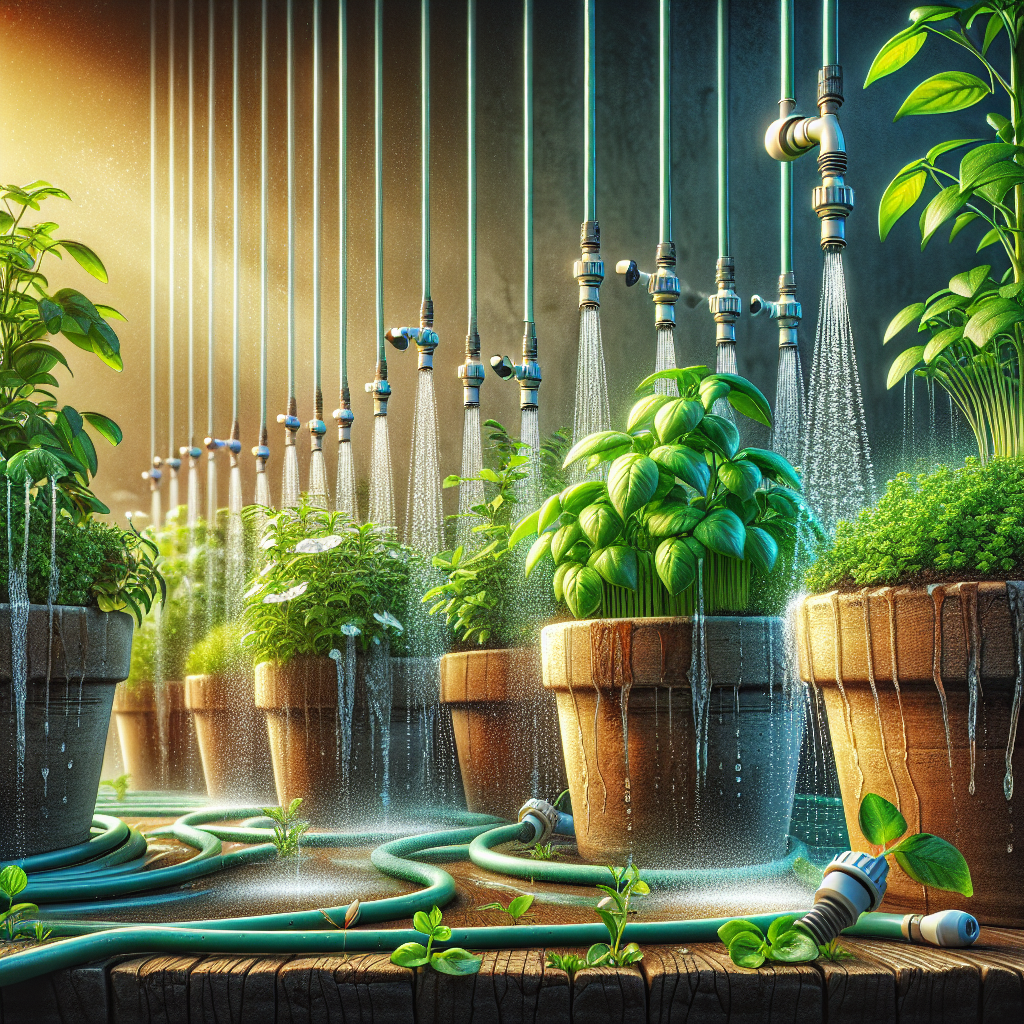Maximizing Yield with a Strategic Slow Drip Watering Approach for Containers
Container gardening is a popular choice for many gardeners, as it allows you to grow plants in a small space and customize the conditions for each plant. However, one of the biggest challenges of container gardening is ensuring that your plants receive enough water without overwatering them. Overwatering can lead to root rot and other issues, while underwatering can cause plants to wilt and stunt their growth.
One effective way to maximize yield in container gardening is by using a strategic slow drip watering approach. This method involves using a drip irrigation system or watering your plants slowly and evenly to ensure that they receive the right amount of water at the right time. In this article, we will discuss the benefits of using a slow drip watering approach for container gardening and provide tips on how to implement this method effectively.
Benefits of Slow Drip Watering
1. Consistent Moisture Levels: One of the main advantages of using a slow drip watering approach is that it helps maintain consistent moisture levels in the soil. By watering your plants slowly and evenly, you can prevent water from pooling on the surface or draining too quickly through the bottom of the container. This ensures that your plants have access to water when they need it, helping them thrive and produce abundant yields.
2. Reduced Water Waste: Slow drip watering also helps reduce water waste by delivering water directly to the root zone of your plants. This minimizes evaporation and runoff, allowing you to use water more efficiently and sustainably. Additionally, slow drip watering can help prevent nutrient leaching from the soil, ensuring that your plants receive all the essential nutrients they need for healthy growth.
3. Disease Prevention: Overwatering can create damp conditions that promote fungal diseases like root rot and powdery mildew. By using a slow drip watering approach, you can avoid creating excess moisture in the soil and reduce the risk of diseases spreading among your plants. This can help protect your plants from common garden pests and diseases, allowing them to thrive and produce bountiful harvests.
Tips for Implementing Slow Drip Watering
1. Choose the Right Container: When using a slow drip watering approach, it’s important to select containers with adequate drainage holes to allow excess water to escape freely. Avoid using containers without drainage holes or those with clogged holes, as this can lead to poor soil drainage and root problems.
2. Use a Drip Irrigation System: Installing a drip irrigation system in your container garden can make slow drip watering more convenient and efficient. Drip systems deliver water directly to the root zone of your plants through tubing or emitters, ensuring that each plant receives adequate moisture without wastage. You can set up timers on your drip system to automate watering schedules based on your plant’s specific needs.
3. Monitor Soil Moisture Levels: To ensure that your plants are receiving enough water through slow drip irrigation, regularly monitor soil moisture levels by inserting your finger into the soil or using a moisture meter. Adjust your watering schedule accordingly based on weather conditions, plant growth stages, and container size.
4. Mulch Your Containers: Applying mulch on top of the soil in your containers can help retain moisture and regulate soil temperature, reducing evaporation rates during hot weather. Organic mulches like straw, shredded bark, or compost also improve soil structure over time as they decompose.
5. Water at the Right Time: To maximize yield with slow drip watering, it’s important to water your plants at the right time of day when evaporation rates are low—early morning or late evening are ideal times for watering container gardens.
In conclusion, maximizing yield with a strategic slow drip watering approach for containers requires careful planning and attention to detail but offers numerous benefits for plant health and productivity in limited space gardens like container gardening setup.
By maintaining consistent moisture levels in the soil while minimizing water waste will be disease prevention techniques also benefit from this method.
Implement these tips effectively such as by installing proper containers but keeping an eye on them continuously so you know what works best depending on specific conditions around chosen spot furthermore adjusting schedules based weather changes may be significant used timing decisions like mulching would conserve precious fluids when needed most opportune moment each day precisely coming up top performance standards required enlightening read hope learn something new useful today happy planting!













